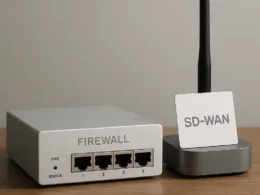Introduction
What’s the best part about 3D printing, you ask? Most people would say it’s the thrill of seeing a digital design come to life layer by layer, but they might be forgetting one crucial step: post-processing. Without it, your barely recognisable, spaghetti-like mess of filament or resin is likely to end up as a rather expensive paperweight. If you thought you could just hit print and call it a day, well, it’s time to adjust your expectations.
In the realm of additive manufacturing, post-processing is a make-or-break phase that dictates whether your printed part meets professional standards or winds up in the bin. It involves various steps to refine the printed piece, from removing support structures to ensuring a smooth finish. As 3D printing technology evolves, so does the need for more efficient, automated processes to streamline these tasks. Today, we’re diving deep into the world of post-processing, because if you want successful 3D prints, this is where it’s at.
The Importance of Post-Processing
So, why is post-processing so vital? Well, if you’re dealing with Fused Deposition Modelling (FDM), for instance, you’ll quickly find that the support structures used during printing can’t just be left hanging around. They need to be carefully removed, and that often requires manual effort. If you’re working with resin prints, excess resin must be washed away with something like isopropyl alcohol (IPA) to achieve that glossy finish we all desire.
The insufferable reality is that many post-processing tasks can be labour-intensive and time-consuming. It’s estimated that post-processing can take as much as 50% of the total print time! If your print takes hours, and you then spend another three hours just cleaning it up, are you really saving time in the long run? What’s worse is that these methods can lead to variability in quality. It’s the equivalent of aiming for a Michelin-star dish but ending up with a soggy takeaway.
Tools and Methods for Post-Processing
Jumping into the next phase, let’s look at the various tools and methods available. The choice really depends on the material used and the final application of the printed part. Here’s a quick run-through:
- Manual Techniques: This includes support removal, sandpaper smoothing, or soaking prints in cleaning solutions. They are dependable but often exhausting and uneven in quality.
- Vibratory Solutions: These machines are perfect for smoothing out metal parts, a common post-processing need. However, their effectiveness can vary.
- Automated Systems: Now we’re talking! Companies like AM Solutions are offering equipment that automates unpacking, powder removal, and surface finishing across several printing technologies, including SLS and SLM.
The Automation Revolution
Speaking of automation, it’s changing the game in additive manufacturing. Automating post-processing workflows can significantly address the issues of time and manual labour intensity. For instance, AM-Flow has developed automated sorting for post-processing that uses computer vision and AI. This nifty tech can sort and identify parts faster than a human ever could, enabling your 3D printing operation to scale efficiently without the eye-watering labour costs.
And it’s not just about simplifying tasks; automated solutions are also addressing material waste. AM Solutions’ UNPIT automates post-processing for SLS printers and can reclaim up to 100% of unused powder, making it a brilliant move for small and medium enterprises trying to cut costs while ramping up productivity. Instead of tossing away unused material, which is essentially throwing money down the drain, you’re reclaiming it for future prints. Sounds like a win-win?
Common Myths in Post-Processing
As the saying goes, misinformation is as common as half-empty gin bottles on a Saturday night. Let’s debunk a few widespread myths surrounding post-processing in 3D printing:
- Post-Processing is Optional: No, it is not! This step is crucial for achieving quality prints.
- All Post-Processing is Manual: This myth is being rapidly dispelled with the advent of automated solutions that save time and increase consistency.
- You Can’t Achieve Professional Quality with Desktop Printers: Untrue, if you invest the time in thoughtful post-processing, you can reach impressive quality even with entry-level equipment.
- Powder Removal Can Wait: Procrastination here can lead to more expensive problems later down the line. Deal with it promptly to avoid issues with part integrity.
- Only High-End Equipment Needs Post-Processing: Even the basic 3D printers deserve a little extra love. Don’t neglect that smooth finish.
Future Trends in Post-Processing
With the 3D printing market expected to grow significantly, amounting to around £117.78 billion by 2033, the focus on efficient post-processing will only intensify. Software solutions from brands like Siemens are already grooming the future landscape, offering comprehensive post-processing tips as part of their integrated manufacturing solutions. Their software enables you to avoid quality issues from the get-go through build simulation and optimised print preparation.
The focus will likely shift to more hybrid approaches marrying software with hardware automation. This evolution won’t just amplify efficiency but can also lead to better quality parts and a more forgiving workflow on the manufacturing floor. It’s not just about printing anymore; it’s about printing smart.
Final Thoughts
Post-processing in 3D printing can feel like the tedious wrap-up to a project that was otherwise exhilarating. However, it’s the final polish that determines whether your hard work will be recognised or ridiculed. As additive manufacturing continues to grow, integrating automation and efficiency into post-processing will not just be a cool perk; it’ll become a necessity for any serious operations.
It’s time we respect the unseen art of post-processing. Embrace tools and tech that streamline your workflows. Because in the end, every good print deserves a little extra love; otherwise, it’s back to the experimenting board, and nobody wants that.








